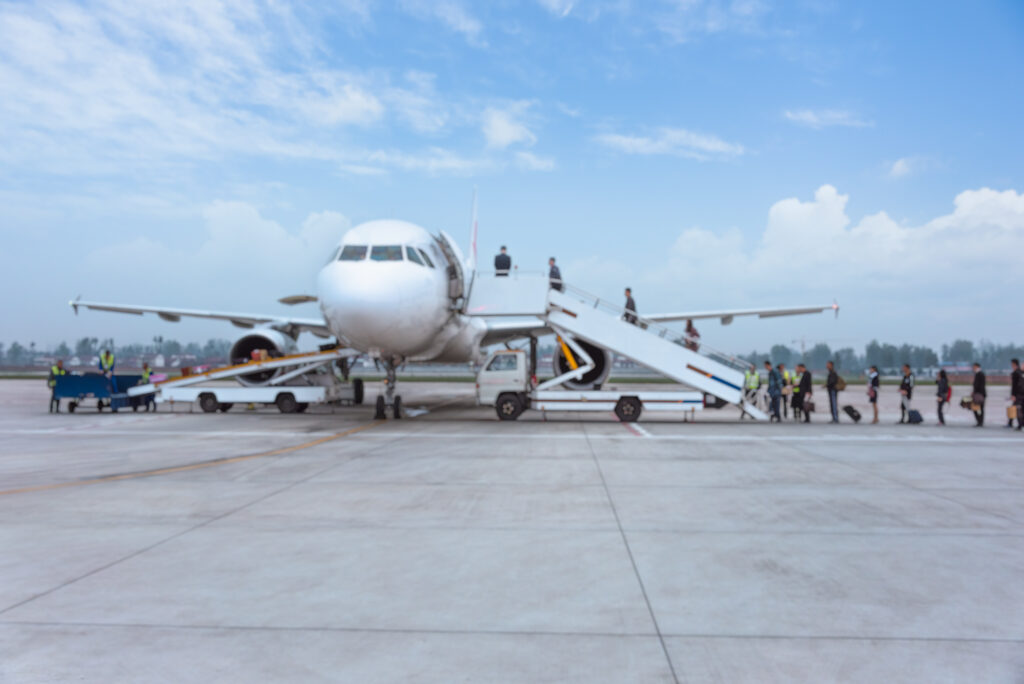Our country has been talking about signing this agreement for years—several governments have come and gone, and we’ve always been “on the verge of signing,” only for negotiations to fall apart at the last minute. What exactly is going on with this famous treaty that has caused us so much hassle?
Let’s start by defining what an Open Skies treaty is:
The term “Open Skies” is used to designate any bilateral air services treaty in which the commercial controls established by the 1944 Chicago Convention—which created the international civil aviation system—are reduced. Each of these treaties is different, and countries make changes to previously signed agreements over time. The U.S. is the main promoter of this type of treaty, having started in the 1970s with the famous “deregulation” within the country that later extended to the international framework through these Open Skies treaties.
The main idea behind these treaties is to eliminate the commercial structures established in the 1944 Chicago Convention, such as the “freedoms of the air” that set the commercial controls for air routes between the signatory countries. In that convention, five basic freedoms were established to safeguard each country’s airlines. These freedoms are:
With Open Skies treaties, states choose to eliminate some of those commercial controls in exchange for greater access to other markets—but at the cost of protecting their own companies. In other words, when you open the air market by reducing these protections, you also expose your national airlines to increased competition. These are the new freedoms that Open Skies treaties generally include:
Now, having understood what we would be giving up, let’s do a simple mathematical exercise to see it in numbers:
Last year, the Dominican Republic received 10 million tourists, of whom more than 95% entered and left the country by air. According to the Dominican Republic’s Civil Aviation Board, the U.S. represents 70% of that flow, which means we can conclude that 7 million tourists visited the country from the U.S. If we assign a round-trip ticket value of about US$300 to each of those tourists, then the total annual value of the routes between the U.S. and the Dominican Republic is roughly US$2,100,000,000. Since we currently follow the scheme set by the 1944 Chicago Convention, control of these routes is divided 50/50 between the two countries. That means the Dominican Civil Aviation Board controls US$1,050,000,000 worth of routes. In other words, the Board could demand that half of the flights operating on those routes be provided by Dominican airlines.
But what is the current reality? For decades, Dominican airlines have lagged behind (almost non-existent) compared to their American counterparts. Many of us remember the disappearance of Dominicana de Aviación, and shortly thereafter, our country was downgraded to Category 3 in operational safety (now called Category 2) by the U.S.—which prevented Dominican airlines from operating commercial flights to the U.S. or signing code-share agreements. Since the U.S. is our main air market, this was a fatal blow to the few remaining Dominican airlines. Our country remained in this “dangerous” category for the U.S. for 13 years, and it wasn’t until 2007 (by which time we had no airline capable of competing in that market) that we finally returned to normal.
Since then, it has been the policy of various Dominican governments to boost tourism using foreign airlines. In the case of the U.S. market, it took two decades before Dominican airlines began operating scheduled flights to the U.S. as we do today. Meanwhile, American airlines have taken almost complete control of the routes between the two countries, reaching the point of an almost total monopoly. This, in turn, has led to the typical complaints when facing a monopoly—poor service, high costs, few options. Thus, the Dominican government has focused on signing this new Open Skies treaty, seeking greater competition to break that monopoly.
Enter Arajet Airlines. Arajet is a company with majority American capital (according to records from the U.S. Department of Transportation, 80% of its capital belongs to the investment fund Bain Capital, based in Massachusetts). Arajet was registered as a Dominican airline despite violating Dominican laws 491-06 and 67-13, which establish that for an airline to be considered Dominican it must have at least 30% Dominican capital or be an airline recognized abroad—Arajet meets neither of these requirements.
Yet Arajet is a highly coveted prize for the Dominican government. Its investment plan speaks of buying and registering up to 40 Boeing 737 MAX airplanes as Dominican, with an investment close to US$3 billion, centered on an air hub in the Dominican Republic that would directly connect the country with many major cities in the region.
In March 2023, Arajet applied to the U.S. Department of Transportation to begin operations to that country. While other Dominican companies, such as SkyHigh Airlines, received that permit in just a few days, Arajet has been waiting for more than a year without success. In an interview on the program *SOL DE LA MAÑANA*, conducted at the recent FITUR in Madrid, Minister of Tourism David Collado stated that President Luis Abinader had tasked him with negotiating the Open Skies treaty with the U.S., and that during meetings, the Americans expressed a desire for a kind of diplomatic trade: Open Skies in exchange for granting Arajet entry into the U.S.
It was clear that there was a legal issue with Arajet’s application to enter the U.S., and now the northern giant was proposing a negotiated way out of this impasse to Collado.
But why does the U.S. want an Open Skies treaty with the Dominican Republic when it already controls almost the entire air market between the two countries?
The answer lies in politics. The U.S. has this type of treaty with all the democracies in the region, and our country is one of the few not included in this commercial framework. Moreover, these negotiations could include topics of interest to American airlines, such as ground handling of baggage services—services that, in some private airports in our country, are managed by Dominican companies—as well as changing the requirement that American airlines pay in U.S. dollars rather than local currency, thus taking advantage of the exchange rate.
But if we are going to sign an agreement where we lose control of over US$1,000,000.00 and cede control of ground services, we must point to something positive to win public support. Here’s the hook: lower ticket prices.
Both the Dominican government and the U.S. embassy in the country have launched a campaign promoting the signing of this agreement as the key to reducing airfares between the U.S. and the Dominican Republic. The U.S. embassy has cited a Brookings Institution study as the source of this widely desired conclusion, and the Dominican government has, in turn, simply echoed the embassy’s position. Interestingly, I looked up and read that Brookings study and found that, like many others, it focuses on Open Skies agreements between large countries—which do indeed help reduce prices and increase efficiency.
However, the same Brookings document tells us that “less efficient” airlines eventually disappear and that the more efficient ones prevail (in aviation, efficiency is achieved through economies of scale—that is, size). And of course, anyone with even a bit of common sense knows that American airlines are much larger than Dominican ones (Arajet currently operates 10 planes per day, SkyHigh about 7; while American Airlines alone has almost 1,000 aircraft). Similarly, Adolfo Ibáñez University in Chile (which did conduct research taking into account the size of countries) concludes, “If the airlines of the larger country are more competitive than those of the smaller country, there may be a transfer of rents to the larger country. For especially small and/or noncompetitive countries in aviation, opening up the market could mean relinquishing the financial flows that their national airlines used to bring into their countries.” So if our airlines disappear, how can we compete? And if we aren’t competitive, how can we lower ticket prices?
In conclusion, we are facing a treaty that is little understood in our country—one that has not achieved consensus among the civil society organizations that will be most affected by it. We have been sold an idea that no one has economically verified, one that seeks to benefit one company above all others—even though that company, being of foreign capital, might simply come, collect its gains, and leave the country if things go poorly. In the past, we have called for consensus on this issue, but as the signing approaches, all we can do is entrust ourselves to the Almighty and say, “God help us.”





